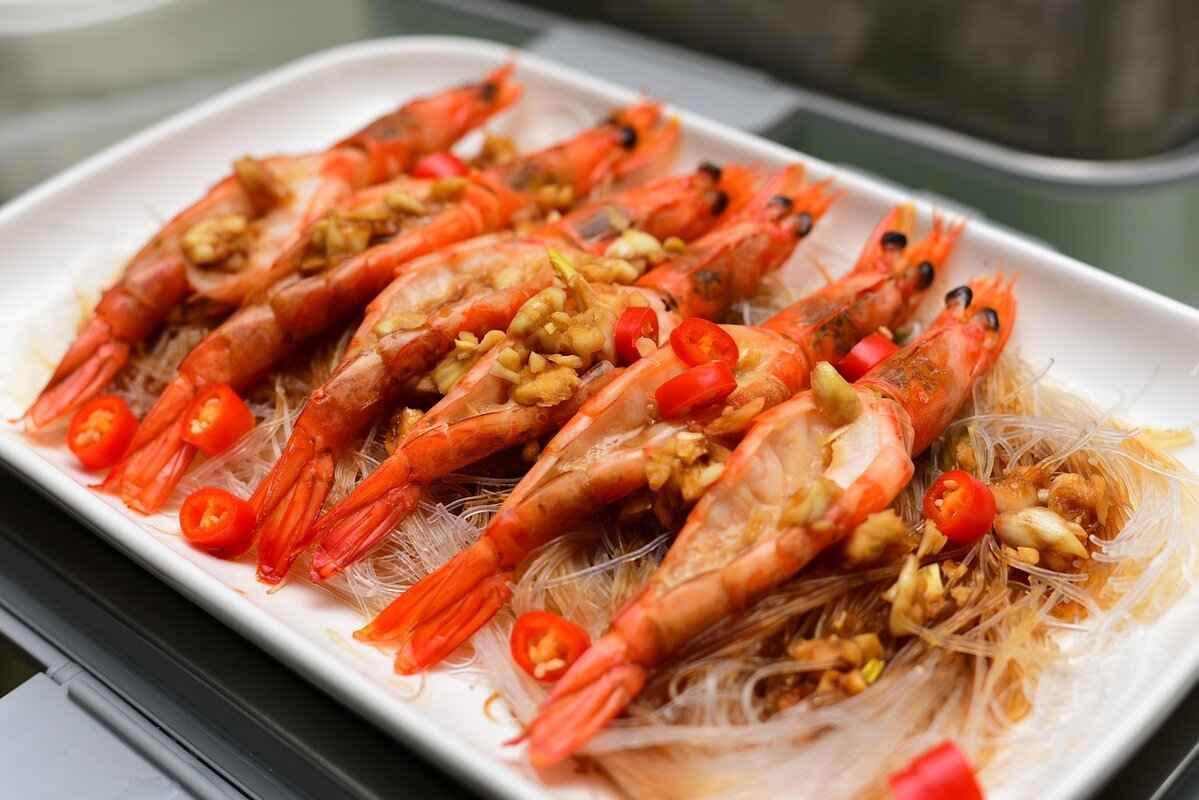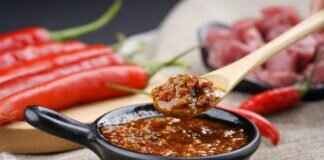In the culinary world, the fusion of Asian and European cooking techniques is a captivating journey that brings together diverse flavors and methods. This article delves into the exciting possibilities that arise from combining these two rich culinary traditions. By understanding their unique characteristics and how to blend them, you can create dishes that are not only delicious but also innovative.
To successfully merge Asian and European cuisines, it is essential to grasp their fundamental differences. Asian cooking often emphasizes bold flavors and the balance of sweet, sour, salty, and umami elements. In contrast, European cooking tends to focus on technique and the use of fresh, seasonal ingredients. For instance, while Asian dishes frequently utilize stir-frying and steaming, European recipes often rely on roasting and baking methods.
Combining flavors from these two culinary worlds requires a thoughtful approach. Start by identifying complementary flavors. For example, the sweetness of hoisin sauce can enhance a European-style roasted duck. Additionally, incorporating ingredients like ginger or chili into traditional European sauces can create exciting new flavor profiles.
Umami, often referred to as the fifth taste, is a cornerstone of many Asian dishes. Ingredients such as soy sauce, miso, and fish sauce are rich in umami and can be integrated into European recipes to add depth. For instance, a miso-based sauce can elevate a classic bechamel, creating a unique twist on traditional pasta dishes.
European cuisine is abundant with herbs and spices that can enhance Asian dishes. Incorporating rosemary, thyme, and garlic into Asian stir-fries or soups can provide a delightful contrast. Experimenting with these flavors can lead to new culinary creations that celebrate both traditions.
In both Asian and European cooking, sauces play a crucial role. To create balanced sauces, consider combining Asian ingredients like sesame oil and rice vinegar with European staples such as cream or wine. This fusion can result in delicious, complex sauces that elevate your dishes.
Cooking techniques greatly influence the final outcome of a dish. While stir-frying is a quick method that retains the freshness of ingredients, sautéing allows for deeper flavor development. Understanding how to adapt these techniques can open up a world of culinary possibilities.
Identifying ingredients that bridge the gap between Asian and European cuisines is key to successful fusion cooking. Staples like rice and pasta can be creatively combined in dishes to highlight their unique textures and flavors.
Rice and pasta are essential components in both Asian and European diets. Consider making a rice noodle pasta dish that incorporates traditional Italian sauces with Asian vegetables for a delightful fusion experience.
Seasonal vegetables can be the stars of fusion dishes. Utilizing fresh produce from both cuisines can create vibrant, healthy meals that celebrate the best of both worlds. Think of a stir-fried vegetable medley seasoned with Italian herbs for a refreshing twist.
Embarking on a fusion cooking adventure can be both fun and rewarding. Start with familiar recipes as a base, gradually incorporating new flavors and techniques. Don’t hesitate to experiment; trust your instincts and let your creativity flow.
Using well-known recipes allows for a smoother transition into fusion cooking. For example, try adding Thai basil to a classic Italian pesto to create a unique sauce.
Improvisation is vital in fusion cooking. Feel free to mix and match flavors, textures, and presentation styles from both culinary traditions to create dishes that are uniquely yours.
Exploring popular fusion dishes can inspire your culinary creativity. For instance, Asian-style risotto combines the creamy texture of Italian risotto with Asian flavors like miso and shiitake mushrooms. Additionally, kimchi pasta offers a spicy twist on traditional pasta dishes, showcasing the delightful possibilities of East-West cuisine.

What Are the Key Differences Between Asian and European Cooking?
When delving into the culinary world, understanding the key differences between Asian and European cooking is essential for anyone looking to create successful fusion dishes. Each tradition has its unique philosophy, flavor profiles, and cooking methods that contribute to its distinct culinary identity.
Asian cuisine is renowned for its diverse flavor profiles that often include a balance of sweet, salty, sour, and umami. Ingredients like soy sauce, ginger, and fish sauce are staples that contribute to this complexity. In contrast, European cooking tends to emphasize richness and depth, often relying on ingredients such as cream, wine, and a variety of herbs and spices to create layered flavors.
When it comes to cooking techniques, the differences are just as pronounced. Stir-frying, a hallmark of Asian cooking, involves cooking food quickly over high heat in a small amount of oil, allowing for vibrant colors and crisp textures. On the other hand, sautéing in European cuisine often involves cooking ingredients slowly over medium heat, which helps develop deeper flavors and aromas.
Ingredient selection plays a crucial role in defining the culinary styles of both regions. Asian cooking frequently utilizes fresh herbs like basil and cilantro, alongside vegetables such as bok choy and mushrooms. European cuisine, however, is rich in root vegetables and hearty greens, such as potatoes, carrots, and cabbage. Understanding how these ingredients can complement or contrast with each other is key to successful fusion cooking.
Combining flavors from Asian and European cuisines requires a nuanced approach. To achieve a harmonious balance, consider the following:
- Sweet and Savory: Incorporate elements like honey or maple syrup from European traditions to enhance the sweetness in Asian dishes.
- Herb Infusion: Use European herbs to add depth to Asian flavors. For instance, a hint of rosemary can elevate a stir-fry.
- Umami Boost: Utilize ingredients like parmesan cheese or smoked meats to introduce umami into European dishes, creating a savory richness.
For home cooks eager to explore fusion cooking, starting with familiar recipes can ease the transition. Begin by selecting a traditional dish from either cuisine and gradually introduce elements from the other. For instance, try adding kimchi to a classic Italian pasta dish or incorporating miso into a French sauce.
Don’t hesitate to improvise; fusion cooking thrives on creativity. Trust your instincts and experiment with flavors, textures, and presentation styles. The beauty of fusion is that there are no strict rules—only delicious discoveries waiting to be made!

How Can You Combine Flavors from Both Cuisines?
Combining flavors from Asian and European cuisines requires a nuanced approach. The art of fusion cooking is not merely about mixing ingredients from different cultures; it involves a deep understanding of flavor profiles, cooking techniques, and ingredient compatibility. This section discusses how to balance sweet, salty, sour, and umami elements to create harmonious dishes that appeal to diverse palates.
To successfully blend these two culinary worlds, it is essential to grasp the core flavor profiles of both cuisines. Asian cooking often emphasizes umami, the savory taste that enhances the overall flavor of dishes. Ingredients such as soy sauce, miso, and fish sauce are staples that impart this rich flavor. In contrast, European cuisine frequently highlights the balance of sweet and salty, often achieved through the use of herbs, spices, and vinegars.
One effective method of combining these flavors is through the creation of balanced sauces. For instance, a sauce that incorporates ginger and sesame oil from Asian traditions can be enhanced with cream or wine from European cooking. This not only adds depth but also creates a unique flavor profile that can elevate a dish.
Another crucial aspect is the use of seasonal ingredients. Both Asian and European cuisines boast a variety of vegetables, fruits, and proteins that can be harmoniously integrated. For example, using seasonal vegetables like asparagus or bok choy can create vibrant dishes that celebrate the best of both worlds. A stir-fried vegetable medley can be complemented with a drizzle of balsamic reduction, marrying the sweet and tangy notes of European cuisine with the savory elements of Asian cooking.
When experimenting with fusion dishes, it is important to start with familiar recipes. For example, a classic Italian pasta dish can be transformed by incorporating kimchi or tofu, introducing new flavors while maintaining the essence of the original dish. This approach allows cooks to gradually explore the nuances of fusion cooking without feeling overwhelmed.
Additionally, improvisation plays a vital role in the fusion process. Trusting one’s instincts to mix flavors can lead to delightful surprises. For instance, adding curry powder to a traditional risotto can create a unique dish that embodies the richness of both Asian and European flavors.
Lastly, understanding the importance of texture cannot be overlooked. The contrast between the crunchy texture of Asian vegetables and the creaminess of European sauces can create a delightful experience for the palate. Consider pairing crispy tempura vegetables with a creamy garlic aioli for an exciting fusion appetizer.
In conclusion, the journey of combining flavors from Asian and European cuisines is an exciting culinary adventure. By focusing on the balance of sweet, salty, sour, and umami elements, utilizing seasonal ingredients, and embracing improvisation, cooks can create dishes that not only satisfy but also delight diverse palates. The possibilities are endless, and with practice, anyone can master the art of fusion cooking.
Understanding Umami in Asian Cuisine
Umami, often referred to as the fifth taste, is a fundamental element in Asian cuisine that significantly enhances the overall flavor profile of dishes. This savory taste, which translates to “deliciousness” in Japanese, is attributed to the presence of certain amino acids and nucleotides. Ingredients such as soy sauce, miso, and fish sauce are quintessential in achieving this rich flavor, making them staples in many Asian recipes.
Umami is recognized for its ability to deepen flavors and create a well-rounded taste experience. It is often found in foods that are rich in protein, such as meats, cheeses, and fermented products. In Asian cooking, umami is not just an afterthought; it is a pivotal component that brings balance to the dish, enhancing other flavors like sweet, salty, and sour.
- Soy Sauce: This fermented product is made from soybeans and wheat, rich in glutamates, which are responsible for that umami kick. It is commonly used in marinades, stir-fries, and dipping sauces.
- Miso: This traditional Japanese paste, made from fermented soybeans, is packed with umami. It adds depth to soups, dressings, and glazes, making it an essential ingredient in many Asian dishes.
- Fish Sauce: A staple in Southeast Asian cooking, fish sauce is made from fermented fish and is known for its intense umami flavor. It is often used in dressings, marinades, and as a seasoning to enhance savory dishes.
To effectively incorporate umami into your dishes, consider the following tips:
- Experiment with fermented ingredients: Incorporate miso or soy sauce into dressings and marinades for an added depth of flavor.
- Use broths and stocks: Create rich bases using umami-rich ingredients. For example, a broth made with dried shiitake mushrooms can enhance the savory profile of soups and stews.
- Combine umami sources: Mixing different umami-rich ingredients can create a complex flavor profile. For instance, combining fish sauce with soy sauce can elevate the taste of stir-fried dishes.
Achieving a harmonious balance of flavors is crucial in Asian cooking. Umami plays a vital role in this balance, helping to round out the sharpness of sour ingredients and the sweetness of sugar. When preparing dishes, consider how umami interacts with other taste elements:
- Sweetness: The addition of umami can temper sweetness, making dishes more savory and satisfying.
- Sourness: Umami can also balance the tartness of acidic ingredients, creating a more cohesive flavor experience.
- Salinity: The saltiness from soy sauce or fish sauce can enhance umami, but it’s essential to use these ingredients judiciously to avoid overpowering the dish.
In conclusion, understanding and utilizing umami in Asian cuisine is essential for creating flavorful and balanced dishes. By incorporating ingredients like soy sauce, miso, and fish sauce, cooks can elevate their culinary creations, ensuring that each bite is a delightful experience.
Using Herbs and Spices from European Cooking
Incorporating European herbs and spices into Asian cuisine can create a delightful culinary fusion that enhances flavors and adds complexity to traditional dishes. This section will explore how to effectively use rosemary, thyme, and garlic in Asian recipes, providing you with practical tips and inspiring ideas.
Why Use Herbs and Spices?
Herbs and spices are essential in both European and Asian cuisines, each offering unique flavor profiles. While Asian cooking often focuses on fresh herbs like cilantro and basil, European cooking brings a depth of flavor through dried herbs and aromatic spices. By blending these two worlds, you can create dishes that are not only flavorful but also intriguing.
Incorporating Rosemary into Asian Dishes
- Flavor Pairing: Rosemary’s earthy and pine-like flavor can complement dishes that incorporate grilled meats or roasted vegetables. Consider adding finely chopped rosemary to a marinade for chicken skewers.
- Soups and Broths: Adding a sprig of rosemary to a traditional Asian broth can provide a robust flavor that enhances the overall dish. Try it in a miso soup or a noodle broth.
Thyme: A Versatile Herb
- Stir-Fried Dishes: Thyme can be used in stir-fried vegetables, adding a subtle depth that contrasts well with soy sauce and sesame oil.
- Rice Dishes: Incorporate thyme into fried rice or pilaf for an aromatic twist that pairs beautifully with ginger and garlic.
Garlic: A Universal Flavor Enhancer
- Marinades and Sauces: Garlic is a staple in both cuisines. Create a fusion marinade by combining garlic with soy sauce, honey, and rice vinegar for a sweet and savory glaze.
- Soups and Stews: Use roasted garlic to add a rich flavor to Asian-inspired soups, such as a creamy coconut curry or a hearty pho.
Practical Tips for Combining Flavors
- Start Small: When experimenting with European herbs in Asian dishes, begin with small amounts to avoid overpowering the dish.
- Balance is Key: Ensure that the flavors of the herbs complement rather than clash with traditional Asian ingredients. For instance, rosemary works well with grilled meats, while thyme can enhance vegetable dishes.
- Experiment with Cooking Techniques: Try different cooking methods, such as roasting or sautéing, to see how the flavors of European herbs evolve in conjunction with Asian ingredients.
Conclusion
Using European herbs and spices like rosemary, thyme, and garlic can elevate your Asian cooking, creating a rich tapestry of flavors. By understanding how to incorporate these ingredients thoughtfully, you can craft dishes that are both familiar and innovative, appealing to diverse palates. Embrace the fusion of these culinary traditions and let your creativity shine!
Creating Balanced Sauces
is a fundamental aspect of both Asian and European cuisines. The art of sauce-making can elevate a dish from ordinary to extraordinary, providing depth and complexity. This section will delve into the techniques and ingredients that harmoniously blend the flavors of both culinary traditions, ensuring that your sauces are not only delicious but also versatile.
To begin with, understanding the core components of a sauce is essential. A well-balanced sauce typically consists of a base, an acid, and seasoning. In European cooking, bases like cream, stock, or wine are commonly used, while Asian sauces often rely on soy sauce, miso, or coconut milk. The challenge lies in merging these elements to create a sauce that complements dishes from both cultures.
1. Combining Asian and European Ingredients
- Ginger and Garlic: These aromatic ingredients are staples in both cuisines. Using fresh ginger alongside roasted garlic can create a flavorful base for sauces.
- Sesame Oil and Olive Oil: The nutty flavor of sesame oil can be combined with the richness of olive oil to add complexity to dressings or marinades.
- Vinegars and Citrus: Incorporating rice vinegar or yuzu juice can provide the necessary acidity to balance creamy sauces.
2. Techniques for Crafting Sauces
When crafting your sauce, consider the cooking techniques that can enhance the flavors. For example, deglazing a pan after sautéing meat with wine or broth can create a rich foundation for your sauce. Similarly, simmering a mixture of soy sauce and cream can lead to a delightful fusion that marries the savory umami of Asian cuisine with the richness of European flavors.
3. Experimenting with Flavor Profiles
One of the most exciting aspects of sauce-making is the opportunity to experiment. Start with a basic sauce and gradually introduce new ingredients. For instance, a traditional béchamel can be transformed by adding a touch of miso or wasabi for an unexpected kick. This experimentation allows you to discover unique combinations that resonate with your palate.
4. Balancing Sweetness and Spiciness
In many Asian dishes, sweetness and spiciness play crucial roles. Incorporating elements like honey or chili paste into European sauces can create a delightful contrast. A honey-mustard sauce, for example, can be enhanced with a dash of chili oil to add depth and intrigue.
5. Final Touches and Presentation
Once your sauce is prepared, consider the final touches that can elevate its presentation. A sprinkle of fresh herbs such as cilantro or parsley can add a burst of color and freshness. Additionally, a drizzle of sesame oil or a splash of balsamic reduction can enhance both flavor and visual appeal.
In conclusion, creating balanced sauces that combine the best of Asian and European cuisines is a rewarding culinary endeavor. By understanding the core components, experimenting with ingredients and techniques, and focusing on balance, you can craft sauces that not only enhance your dishes but also reflect the rich tapestry of flavors from both cultures. Embrace the art of sauce-making and let your creativity flow!
Techniques for Cooking: Stir-Frying vs. Sautéing
When it comes to cooking methods, stir-frying and sautéing are two techniques that can significantly influence the flavor, texture, and overall appeal of a dish. While both methods involve cooking food quickly over high heat, they differ in their approach, equipment, and the types of ingredients used. Understanding these differences can help you adapt each technique to create delicious fusion dishes that incorporate elements from both Asian and European culinary traditions.
What is Stir-Frying?
Originating from Asia, particularly China, stir-frying is a technique that involves cooking small, uniform pieces of food in a small amount of oil over high heat. The key to successful stir-frying lies in the use of a wok, which allows for even heat distribution and quick cooking. Ingredients are typically cut into bite-sized pieces and cooked rapidly, ensuring they retain their crispness and nutritional value. This method is ideal for vegetables, proteins, and noodles, as it allows the flavors to meld quickly.
What is Sautéing?
Sautéing, on the other hand, is a technique commonly used in European cooking. It involves cooking food in a small amount of fat, such as butter or oil, over medium to high heat. Unlike stir-frying, sautéing often uses larger pieces of food, which are cooked until they develop a golden-brown crust. This method is perfect for enhancing the flavors of ingredients, especially when using aromatic herbs and spices.
Key Differences Between Stir-Frying and Sautéing
- Equipment: Stir-frying is best executed in a wok, while sautéing is typically done in a frying pan or skillet.
- Heat Level: Stir-frying requires higher heat compared to sautéing, which is often done at medium heat.
- Ingredient Size: Stir-frying uses smaller, uniform pieces, while sautéing can accommodate larger cuts of meat or vegetables.
- Cooking Time: Stir-frying is a quick method, usually taking only a few minutes, whereas sautéing may take slightly longer.
How to Adapt Techniques for Fusion Cooking
By understanding the strengths of both stir-frying and sautéing, you can create dishes that blend the best of both worlds. For instance, try stir-frying vegetables with a European twist by adding herbs like thyme or rosemary towards the end of the cooking process. Alternatively, you can sauté proteins in butter and then toss them with a quick stir-fried vegetable medley for a delightful fusion experience.
Experimenting with Ingredients
To further enhance your dishes, consider using ingredients from both cuisines. For example, incorporating Asian sauces like soy sauce or teriyaki into sautéed dishes can add depth and complexity. Conversely, using European ingredients such as wine or cream in stir-fried dishes can create a rich flavor profile that surprises and delights the palate.
In conclusion, both stir-frying and sautéing are versatile cooking techniques that can be adapted to create innovative fusion dishes. By mastering these methods and understanding their unique characteristics, you can elevate your culinary creations and explore the exciting possibilities of blending Asian and European flavors.

What Ingredients Work Well Together?
When embarking on the exciting journey of fusion cooking, the selection of ingredients plays a pivotal role. Identifying compatible ingredients is essential for creating dishes that not only taste great but also celebrate the unique characteristics of both Asian and European cuisines. This section will explore a variety of versatile ingredients that can seamlessly bridge the gap between these culinary traditions, enhancing the overall flavor profile of your dishes.
To achieve a successful fusion, it is crucial to understand how certain ingredients can complement each other. Here are some categories and examples of ingredients that work harmoniously:
- Grains: Rice and Pasta are staples in both Asian and European cuisines. Experimenting with dishes like rice noodles in a creamy pasta sauce can yield delightful results, showcasing the best of both worlds.
- Proteins: Ingredients such as chicken and tofu can be adapted to fit various flavor profiles. For instance, marinating chicken in soy sauce and then grilling it can create a dish that appeals to both Asian and Western palates.
- Vegetables: Seasonal produce like broccoli and bell peppers are versatile and can be used in stir-fries or roasted as a side dish. Combining Asian vegetables like bok choy with European favorites like asparagus can create visually stunning and nutritious meals.
- Herbs and Spices: Incorporating ginger and garlic from Asian cuisine with herbs like rosemary and thyme from European cooking can elevate the flavor profile of your dishes. For example, a ginger-rosemary marinade for grilled meats can be a game changer.
- Sauces: The fusion of soy sauce and cream can lead to unique sauces that marry the rich flavors of both cuisines. Consider a soy-cream sauce for pasta or a stir-fry to enhance the dish’s complexity.
In addition to these categories, there are specific ingredients worth mentioning:
- Miso: This fermented soybean paste adds a depth of flavor that can enhance European dishes, especially in soups or dressings.
- Sesame Oil: A few drops can transform a simple vinaigrette into a flavorful dressing, perfect for salads or drizzling over grilled vegetables.
- Fish Sauce: Used sparingly, it can introduce a savory umami flavor to European dishes, particularly in marinades or sauces.
When combining these ingredients, consider the balance of flavors. The key is to ensure that no single element overwhelms the dish. Instead, aim for a harmonious blend that allows the unique characteristics of each ingredient to shine through.
In conclusion, the world of fusion cooking is vast and full of potential. By carefully selecting and combining ingredients from both Asian and European cuisines, you can create dishes that are not only delicious but also innovative and exciting. So, gather your ingredients, embrace your creativity, and start your culinary adventure!
Rice and Pasta: A Perfect Pairing
Rice and pasta are not just staples in their respective cultures; they are also incredibly versatile ingredients that can be creatively combined to create unique and delightful dishes. By exploring the textures and flavors of these two beloved staples, cooks can develop exciting fusion meals that celebrate the best of both worlds.
Combining rice and pasta allows for a diverse culinary experience that can cater to various tastes and preferences. The chewy texture of pasta complements the fluffy nature of rice, creating a satisfying mouthfeel. Additionally, both ingredients serve as excellent carriers for sauces, vegetables, and proteins, making them a perfect base for a variety of dishes.
- Rice Noodle Pasta Salad: This refreshing dish combines rice noodles with traditional pasta elements, such as cherry tomatoes, olives, and a zesty vinaigrette. The result is a light yet filling salad that is perfect for warm weather.
- Risotto with Pasta: Imagine a creamy risotto enriched with small pasta shapes like orzo or ditalini. This combination not only enhances the texture but also adds an extra layer of flavor to the dish, making it a hearty meal.
- Fried Rice Pasta Stir-Fry: A stir-fry featuring both rice and pasta can be a delicious way to use up leftovers. Simply toss cooked rice and pasta with your choice of vegetables, proteins, and sauces for a quick and satisfying meal.
When preparing dishes that combine rice and pasta, it’s essential to consider cooking times and methods. Here are some tips:
1. Cook rice and pasta separately until al dente.2. Drain both and rinse under cold water to stop cooking.3. Mix them together in a pan with your chosen sauce and ingredients.4. Allow them to absorb flavors for a few minutes on low heat before serving.
The beauty of combining rice and pasta lies in the ability to experiment with various sauces and ingredients. Consider using:
- Asian sauces like soy sauce or teriyaki for a savory twist.
- Italian sauces such as pesto or marinara to create a fusion of flavors.
- Fresh herbs like basil, cilantro, or parsley to elevate the dish.
The combination of rice and pasta not only offers a unique texture but also allows for a wealth of flavor profiles. Whether you prefer a spicy kick or a creamy finish, this pairing can adapt to any culinary style. By experimenting with different ingredients and cooking techniques, you can create a dish that is truly your own.
Incorporating rice and pasta into your meals opens up a world of possibilities, allowing you to enjoy the best of both culinary traditions. So, the next time you’re in the kitchen, consider how you can blend these two staples into a delightful dish that will impress your family and friends.
Vegetables: A Fusion Playground
Vegetables can truly shine in the realm of fusion cuisine, serving as a vibrant canvas for creativity and flavor. By utilizing seasonal produce from both Asian and European culinary traditions, home cooks and chefs alike can craft meals that are not only healthy but also visually stunning and full of diverse tastes.
Seasonal vegetables are crucial in fusion cooking as they provide the freshest flavors and highest nutritional value. By selecting produce that is in season, you can enhance the taste of your dishes and support local farmers. For instance, using spring asparagus or summer tomatoes can add a burst of flavor that complements Asian spices or European herbs.
When creating fusion dishes, it’s essential to choose vegetables that can bridge the flavor profiles of both cuisines. Some versatile options include:
- Bell Peppers: These can be stir-fried with soy sauce or roasted with olive oil for a Mediterranean twist.
- Eggplant: This vegetable works well in both Asian curries and Italian ratatouille.
- Carrots: They can be pickled in rice vinegar for Asian salads or glazed with honey for European dishes.
There are numerous cooking techniques that can elevate the presentation and flavor of vegetables:
- Stir-Frying: Quick and high-heat cooking preserves the crunch and nutrients of vegetables. Combine Asian sauces like teriyaki with European ingredients like garlic and olive oil.
- Roasting: This method brings out the natural sweetness of vegetables. Try roasting cauliflower with curry powder and serving it with a creamy European-style sauce.
- Grilling: Grilled vegetables can be a delightful addition to salads. Marinate zucchini in soy sauce and serve with a feta cheese crumble.
Here are a few examples of successful fusion dishes that highlight the versatility of vegetables:
- Thai Basil Pesto Pasta: This dish combines the classic Italian pesto with Thai basil, offering a fragrant and flavorful twist.
- Vegetable Sushi Rolls: Incorporating roasted bell peppers and creamy avocado into sushi rolls brings a new texture and taste that appeals to both Asian and Western palates.
- Kimchi Ratatouille: A fusion of French and Korean cuisines, this dish features traditional ratatouille ingredients enhanced with spicy kimchi for a unique flavor profile.
Incorporating seasonal vegetables into your fusion dishes not only enhances flavor but also promotes health and sustainability. By experimenting with various cooking techniques and flavor combinations, you can create meals that are not only delicious but also celebrate the rich culinary traditions of both Asia and Europe.

How to Experiment with Fusion Dishes at Home?
Experimenting with fusion dishes can be a thrilling culinary adventure that allows home cooks to explore new flavors and techniques. By blending elements from both Asian and European cuisines, cooks can create unique dishes that tantalize the taste buds. This section offers practical tips and techniques for those eager to craft their own East-West culinary masterpieces.
- Start with Familiar Recipes: A great way to ease into fusion cooking is by using recipes you already know and love. For instance, consider taking a classic spaghetti aglio e olio and adding a hint of sesame oil or tossing in some edamame for a surprising twist. This approach allows you to maintain the essence of the original dish while introducing new flavors.
- Don’t Be Afraid to Improvise: One of the most exciting aspects of fusion cooking is the freedom to experiment. Trust your instincts and play with ingredients. For example, why not try Thai basil in a traditional Italian pesto? The key is to balance flavors and not shy away from bold combinations.
- Use Seasonal Ingredients: Incorporating seasonal produce can elevate your fusion dishes. For instance, use spring vegetables like asparagus or peas to create a vibrant stir-fry that honors both Asian and European cooking styles. Seasonal ingredients not only enhance flavor but also contribute to a more sustainable cooking practice.
- Experiment with Sauces: Sauces play a crucial role in both Asian and European cuisines. Consider crafting a miso béchamel or a soy sauce reduction to drizzle over grilled meats. These sauces can bridge the flavor profiles of both culinary worlds, adding depth and complexity to your dishes.
- Try New Cooking Techniques: Different cooking methods can significantly impact the final dish. For example, instead of traditional boiling, try stir-frying your vegetables before adding them to a pasta dish. This technique not only preserves their crispness but also infuses them with a smoky flavor.
Identifying compatible ingredients is essential for successful fusion cooking. Here are a few versatile ingredients that can enhance your dishes:
- Rice and Pasta: Combining rice and pasta can lead to creative dishes like rice noodle carbonara or fried rice with orzo, showcasing the best of both textures.
- Vegetables: Seasonal vegetables can shine in fusion dishes. Use bok choy in a ratatouille or zucchini in a stir-fry to create colorful and nutritious meals.
Presentation is key in making your fusion dishes visually appealing. Here are some tips to elevate your plating:
- Color Contrast: Use a variety of colorful ingredients to create a visually stunning plate. The vibrant colors of fresh herbs, vegetables, and sauces can make your dish pop.
- Layering Textures: Combine different textures to create an engaging eating experience. For instance, pair crispy fried shallots with creamy sauces or soft noodles.
- Garnishing: Garnish your dishes with fresh herbs, edible flowers, or a sprinkle of toasted sesame seeds to add an extra touch of elegance.
By following these practical tips and techniques, home cooks can embark on an exciting journey of fusion cooking. The possibilities are endless, and with a little creativity, anyone can create delicious dishes that celebrate the best of both Asian and European cuisines.
Start with Familiar Recipes
When venturing into the exciting world of fusion cooking, starting with familiar recipes can significantly ease the transition. This approach allows both novice and experienced cooks to explore new flavors and techniques without feeling overwhelmed. By using traditional dishes as a foundation, you can gradually introduce elements from different culinary traditions, creating unique and delightful meals that celebrate both cultures.
Familiar recipes provide a sense of comfort and confidence in the kitchen. They serve as a reference point that can guide you through the fusion process. Here are some reasons why this strategy works:
- Confidence Boost: Starting with a recipe you know well allows you to focus on experimenting with new ingredients without the fear of failure.
- Flavor Familiarity: You can maintain a balance of flavors by incorporating new elements into a dish that you already enjoy.
- Gradual Learning: This method promotes a gradual learning curve, enabling you to understand how different flavors and techniques interact.
Once you’ve chosen a familiar recipe, the next step is to experiment with new flavors. Here are some practical tips:
- Start Small: Introduce one new ingredient at a time, such as a spice or sauce, to see how it complements the existing flavors.
- Mix Techniques: If your base recipe involves baking, consider incorporating a stir-fry technique for vegetables to add texture and flavor.
- Use Fusion Ingredients: Ingredients like ginger, garlic, and chili can easily enhance traditional European dishes, making them more vibrant.
Let’s explore some examples where traditional recipes have been successfully fused with new elements:
- Spaghetti with Asian Pesto: Combine classic Italian pesto with sesame oil and cilantro for a unique twist on traditional pasta.
- Teriyaki Chicken Tacos: Use grilled teriyaki chicken as a filling for soft tacos, topped with a refreshing cabbage slaw.
- Curried Risotto: Infuse Italian risotto with curry spices and coconut milk, creating a creamy and aromatic dish.
To ensure your fusion cooking journey is enjoyable and successful, keep these tips in mind:
- Trust Your Taste Buds: If something sounds good, give it a try! Your palate is your best guide.
- Document Your Experiments: Keep a cooking journal to note what works and what doesn’t, helping you refine your techniques over time.
- Invite Feedback: Share your creations with friends and family to gather opinions, which can inspire further experimentation.
By starting with familiar recipes and gradually incorporating new flavors and techniques, you can create exciting dishes that blend the best of both worlds. This approach not only enhances your culinary skills but also opens up a world of flavor possibilities. So, gather your ingredients, unleash your creativity, and embark on your fusion cooking adventure!
Don’t Be Afraid to Improvise
Improvization is an essential ingredient in the art of fusion cooking, allowing chefs to break free from traditional boundaries and create unique culinary experiences. When blending Asian and European cuisines, the ability to trust your instincts is paramount. This section explores how embracing spontaneity can elevate your dishes, enhancing both flavor and presentation.
At the heart of successful fusion cooking lies the willingness to experiment. By playing with flavors, textures, and presentation styles from both culinary traditions, cooks can discover exciting new combinations. For instance, imagine a traditional Italian risotto infused with the bold flavors of Thai curry. The creamy texture of the rice melds beautifully with the aromatic spices, creating a dish that is both familiar and refreshingly new.
One of the key aspects of improvization is understanding the core elements of each cuisine. Asian cooking often emphasizes balance, featuring a harmonious blend of sweet, salty, sour, and umami flavors. European cuisine, on the other hand, frequently highlights rich, hearty ingredients and robust flavors. By recognizing these differences, cooks can effectively combine them to create dishes that resonate with a wider audience.
- Trust Your Taste Buds: When experimenting, it’s crucial to rely on your palate. Taste as you go, adjusting ingredients based on what feels right.
- Be Open to New Ingredients: Don’t hesitate to incorporate unfamiliar ingredients. For example, adding ginger to a classic French sauce can introduce a delightful twist.
- Incorporate Seasonal Produce: Use fresh, seasonal vegetables from both cuisines to enhance your dishes. This not only adds flavor but also showcases the best of what each culture has to offer.
Furthermore, presentation plays a significant role in fusion cooking. The aesthetic appeal of a dish can greatly influence its perception. By combining elements from both Asian and European plating styles, cooks can create visually stunning meals. For example, serving a sushi roll on a rustic wooden board can evoke a sense of tradition while still embracing modern culinary trends.
Another important aspect of improvization is the willingness to make mistakes. Not every experiment will yield a successful dish, but each attempt provides valuable lessons. Embracing failure as part of the learning process can lead to unexpected breakthroughs in flavor and technique.
To further enhance your fusion cooking skills, consider these practical tips:
- Start Small: Begin by modifying a single ingredient in a traditional recipe. For instance, try adding soy sauce to a classic pasta dish for a subtle umami kick.
- Join a Cooking Class: Look for classes that focus on fusion cuisine. Learning from experienced chefs can provide new insights and techniques.
- Document Your Creations: Keep a journal of your experiments, noting what works and what doesn’t. This can help you refine your approach over time.
In conclusion, don’t shy away from the creative process. Improvization is not just a method; it’s a mindset that can transform your cooking. By trusting your instincts and allowing yourself to explore the vast possibilities of fusion cuisine, you can create dishes that are not only delicious but also a true reflection of your culinary journey.

What Are Some Popular Fusion Dishes to Try?
In today’s culinary landscape, fusion cuisine has emerged as a dynamic and exciting way to explore flavors from different cultures. This question resonates with food enthusiasts eager to experiment in their kitchens. By blending traditional recipes with innovative twists, chefs and home cooks alike can create dishes that are not only delicious but also visually stunning.
The appeal of fusion cuisine lies in its creativity and adaptability. By marrying the rich flavors of Asian and European cooking, chefs can develop unique dishes that cater to diverse palates. This culinary trend encourages experimentation, allowing cooks to break free from traditional boundaries and embrace new tastes. As a result, fusion dishes often become a conversation starter, making them popular in restaurants and homes alike.
- Tex-Mex Sushi: A delightful combination of sushi and Mexican flavors, this dish features sushi rolls filled with ingredients like avocado, jalapeños, and spicy tuna, all wrapped in seaweed and rice.
- Butter Chicken Pizza: This innovative dish takes the classic Indian butter chicken and transforms it into a pizza topping, blending the best of both worlds.
- Ramen Burger: A creative twist on the classic burger, this dish uses ramen noodles as the bun, filled with a juicy beef patty and topped with Asian-inspired condiments.
- Spaghetti Carbonara with Miso: A rich Italian carbonara meets umami-packed miso, creating a creamy sauce that elevates the traditional dish.
- Chili Crab Tacos: Combining the iconic Singaporean chili crab with soft-shell tacos, this dish offers a spicy and tangy experience that is both familiar and exotic.
Creating your own fusion dishes can be an enjoyable and rewarding experience. Here are some tips to get started:
- Start with Familiar Ingredients: Choose ingredients that you are comfortable with and gradually incorporate new flavors from different cuisines.
- Experiment with Textures: Combining different textures can add depth to your dishes. For instance, pairing crispy elements with creamy sauces can create a delightful contrast.
- Balance Flavors: Ensure that the flavors in your dish are well-balanced. Consider the fundamental tastes—sweet, salty, sour, and umami—when crafting your fusion recipes.
- Incorporate Seasonal Produce: Using fresh, seasonal ingredients can enhance the overall flavor and presentation of your dishes.
Some ingredients lend themselves particularly well to fusion cooking:
- Quinoa: This versatile grain can be used in both Asian and European dishes, adding a nutritious twist to salads, bowls, and more.
- Sriracha: The spicy sauce can elevate various dishes, from pasta to tacos, adding a kick of heat.
- Coconut Milk: This creamy ingredient can be used in both Asian curries and European desserts, offering a rich flavor profile.
By exploring these popular fusion dishes and experimenting with your own creations, you can inspire creativity in the kitchen and delight friends and family with unique culinary experiences.
Asian-Style Risotto
is a captivating fusion dish that marries the creamy texture of traditional Italian risotto with the rich, umami flavors of Asian cuisine. This culinary creation not only tantalizes the taste buds but also showcases the beauty of blending diverse culinary traditions. In this section, we will explore how to prepare this unique dish while maintaining its authentic essence.
To create a delicious Asian-style risotto, you will need the following key ingredients:
- Arborio Rice: This short-grain rice is essential for achieving the creamy consistency.
- Miso Paste: Adds depth and a savory umami flavor.
- Shiitake Mushrooms: These mushrooms provide an earthy flavor that complements the dish beautifully.
- Vegetable or Chicken Broth: Use a flavorful broth as the base for cooking the rice.
- Scallions: For garnish and a touch of freshness.
- Sesame Oil: A drizzle at the end enhances the dish with a nutty aroma.
Follow these steps to prepare your own Asian-style risotto:
1. In a saucepan, heat your broth and keep it warm over low heat.2. In a separate pan, sauté chopped shiitake mushrooms in a little olive oil until they are tender.3. Add Arborio rice to the pan with the mushrooms and stir for about 2 minutes until the rice is slightly translucent.4. Gradually add warm broth, one ladle at a time, stirring frequently. Allow the rice to absorb the broth before adding more.5. After about 15-20 minutes, when the rice is al dente, stir in miso paste until fully dissolved.6. Finish with a drizzle of sesame oil and garnish with chopped scallions.
The fusion of flavors in Asian-style risotto sets it apart from traditional versions. The miso paste not only enhances the savory aspect but also introduces a hint of sweetness, while the shiitake mushrooms add a rich, earthy undertone. This dish is a perfect example of how to honor the roots of Italian cooking while embracing the bold flavors of Asian cuisine.
Absolutely! One of the beauties of fusion cooking is the ability to experiment. Consider adding:
- Vegetables: Incorporate seasonal vegetables like peas or bok choy for added texture and nutrition.
- Proteins: Add grilled chicken, shrimp, or tofu to make the dish more filling.
- Spices: Experiment with spices such as ginger or chili flakes for an extra kick.
Asian-style risotto is not just a meal; it’s an experience. It invites you to explore the harmony between different culinary traditions, allowing you to appreciate the nuances of flavor and texture. Whether you are a seasoned chef or a home cook looking to try something new, this dish is sure to impress.
Kimchi Pasta
is an innovative dish that beautifully marries the bold flavors of Korean cuisine with the comforting essence of Italian cooking. This fusion meal not only tantalizes the taste buds but also offers a unique culinary experience that is both spicy and savory. The combination of fermented kimchi and traditional pasta creates a dish that is not only delicious but also packed with nutrients and probiotics.
Kimchi pasta stands out due to its ability to blend two distinct culinary traditions. The spiciness of kimchi complements the richness of pasta, making it a perfect choice for those looking to explore new flavors. Additionally, this dish is highly versatile, allowing for various adaptations based on personal preferences and dietary restrictions.
- Pasta: Spaghetti or fettuccine works well.
- Kimchi: Use store-bought or homemade for the best flavor.
- Protein: Options include chicken, tofu, or shrimp.
- Vegetables: Bell peppers, onions, and scallions add freshness.
- Seasonings: Soy sauce, garlic, and sesame oil enhance the flavor.
- Cheese: A sprinkle of Parmesan or mozzarella adds creaminess.
Creating this delightful fusion dish is straightforward. Follow these steps to prepare a delicious kimchi pasta:
- Cook the Pasta: Begin by boiling water in a large pot. Add a pinch of salt and cook the pasta according to the package instructions until al dente. Drain and set aside.
- Sauté the Vegetables: In a large skillet, heat a tablespoon of oil over medium heat. Add chopped onions and bell peppers, sautéing until they are soft and fragrant.
- Add Kimchi: Incorporate the kimchi into the skillet, stirring well to combine. Allow it to cook for a few minutes to enhance its flavor.
- Add Protein: If using chicken, tofu, or shrimp, add it at this stage. Cook until the protein is fully cooked and heated through.
- Combine with Pasta: Add the drained pasta to the skillet, mixing thoroughly. Pour in soy sauce and sesame oil, tossing everything together to ensure even coating.
- Finish with Cheese: If desired, sprinkle cheese on top and allow it to melt slightly before serving.
To elevate your kimchi pasta experience, consider the following tips:
- Experiment with Flavors: Feel free to adjust the spice level by adding more or less kimchi or incorporating chili flakes.
- Use Fresh Ingredients: Fresh vegetables and high-quality pasta will enhance the overall taste of the dish.
- Garnish Wisely: Top your dish with sesame seeds, chopped scallions, or a drizzle of chili oil for an added flavor boost.
Kimchi pasta is not just a meal; it’s an adventure in flavors that invites you to explore the best of both Korean and Italian cuisines. Whether you are a seasoned chef or a novice in the kitchen, this dish offers an exciting way to experiment with fusion cooking and enjoy a delightful culinary experience.
Frequently Asked Questions
- What are the main differences between Asian and European cooking techniques?
Asian cooking often emphasizes balance and harmony, utilizing techniques like stir-frying and steaming, while European cooking focuses on techniques such as roasting and baking. The flavor profiles also differ, with Asian cuisine leaning towards umami and spice, whereas European cuisine often highlights rich, creamy flavors.
- How can I successfully combine flavors from both cuisines?
To blend flavors, start by balancing sweet, salty, sour, and umami elements. Experiment with ingredients like soy sauce and herbs from European cooking to create dishes that are both exciting and harmonious. Think of it as a dance where each ingredient plays its part!
- What ingredients are best for fusion cooking?
Look for versatile ingredients that are staples in both cuisines. Rice and pasta, for instance, can be combined in creative dishes. Seasonal vegetables can also serve as a vibrant base for fusion meals, allowing you to celebrate the best of both culinary worlds.
- Can I experiment with fusion dishes at home?
Absolutely! Start with familiar recipes and gradually introduce new flavors and techniques. Don’t be afraid to improvise; trust your instincts and have fun with the process. Cooking is all about creativity, so let your imagination run wild!
- What are some popular fusion dishes I should try?
Some exciting fusion dishes include Asian-style risotto, which combines creamy Italian rice with Asian flavors, and kimchi pasta, a spicy twist on traditional pasta. These dishes showcase how well the two cuisines can work together!














